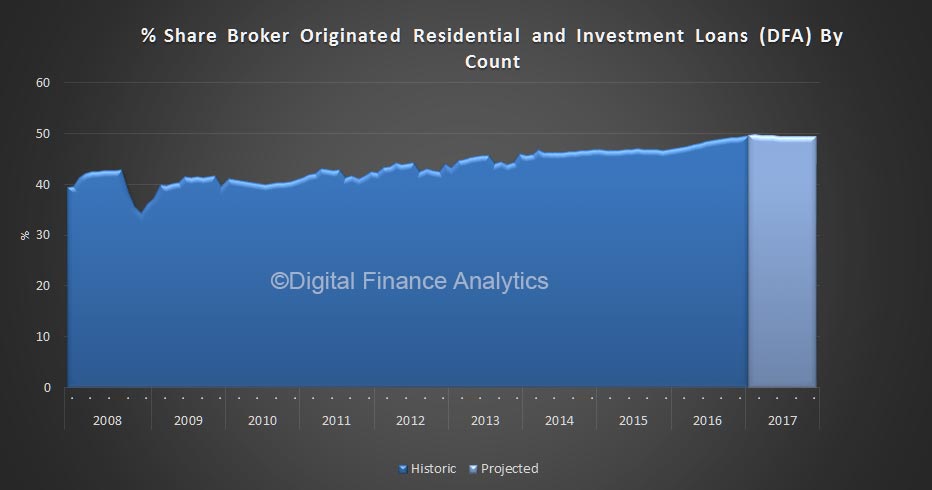Broker associations and several members of the industry have slammed a recent UBS report that claimed mortgage brokers are “overpaid”, saying that the data is “wrong” and the findings are “ridiculous”.
In an analyst note entitled, Are mortgage brokers overpaid?, analysts Jonathan Mott and Rachel Bentvelzen argued that the new bank levy could be offset by the banks if they cut broker commissions.
The analysts suggested that broker commissions exceeded $2.4 billion in 2015, and added 16 basis points, or $4,600 to the cost of a mortgage.
The damning note went on to argue that the cost of broker commissions are factored into how a bank costs its home loans, which the UBS analysts said were then borne by mortgage customers.
“Although mortgage broker commissions are paid by the bank, not the customer, commissions are factored into the bank’s cost of funding and have been a driving factor in mortgage repricing in recent years,” they said.
Touching on the ASIC and ABA reports on mortgage broker remuneration, the UBS analysts claimed that the bodies had “called for sweeping changes to the way brokers are remunerated”.
It also referred to an 18 per cent “blow out” in commissions paid to brokers since the financial year 2012 and said there was an “unrealistic economic rent being extracted by the mortgage broking industry”.
The analysts concluded that “while a mortgage is a large financial commitment, it is a simple, commoditised product” and could therefore “be easily provided by robo-advice”.
Report is ‘garbage’
Several members of the industry have lambasted the note, stating that the analysis is using incorrect data and thus drawing unfair and damaging conclusions.
Peter White, the executive director of the Finance Brokers Association of Australia, called the report “garbage” and said that the average broker commission was between $2,500 and $3,000 a deal (not the $4,500 quoted by UBS).
Speaking to The Adviser, Mr White said: “This report is way off the mark. To me, it just doesn’t make sense. The data is flawed and before they start making comments, they need to ensure that they have information that is actually backed by fact.”
He continued: “To suggest that there are 16 basis points added to every mortgage because of a broker’s involvement is the most ridiculous comment to make. It’s the most ridiculous comment I’ve seen in the last 12 months. The reality is you pay the same rate in the bank as you do through a broker, so where did that come from? It’s the same interest rate.”
Mr White concluded: “The report is garbage and I’m really disappointed that UBS has gone out and released something that is so fundamentally flawed. UBS is a global bank, it shouldn’t be making these sorts of mistakes. It makes them lose all credibility in the marketplace.
“UBS need to restructure their research department. They are certainly not doing their job and they are an embarrassment to UBS.”
MFAA ‘extremely frustrated’ by report
The Mortgage & Finance Association of Australia (MFAA) also said that it was disappointed by the tone of the note, and argued that several points were either “incorrect” or “misleading”.
Backing the value of brokers, the MFAA said that working with a customer to secure a mortgage can be extremely complex and often requires months of work from a broker (not to mention the subsequent years as the broker supports the customer for the life of the loan), and goes far beyond what robo-advice can offer.
MFAA CEO Mike Felton commented: “Complexity gravitates towards the broker channel (as does the need for service) and brokers go to great lengths to help these clients find a suitable mortgage product.”
Mr Felton also said he thought UBS’ commissions calculation was wrong, stating that they had divided the total amount of broker commissions in 2015 (which included upfront and trail commission) by the number of loans written by brokers in 2015.
He said: “This has given them a commission per mortgage that is about double what it actually is in the year of acquisition.”
The MFAA CEO added that an “interrogation of the data demonstrates that the increases to total remuneration to the broking channel are not due to changes to commission structures”, but due to “the simple fact that every year, more Australians are turning to brokers,” Mr Felton said.
“We are extremely frustrated by this report,” he added, concluding that the MFAA was “extremely disappointed that a reputable organisation would issue a report like this without ensuring that the data they’re working with is correct”.
‘A bank extolling the virtues of banks’
Both associations emphasised that the ASIC report had also not recommended “sweeping changes”, but instead “improve” the standard commission model, and highlighted that the ASIC report actually recognised the value in mortgage brokers – with chairman Greg Medcraft telling the media after the release of the report that brokers deliver “great consumer outcomes”.
The interim CEO of aggregation group AFG, David Bailey, said that it was important to note that the UBS report was issued by a company that owns an investment bank.
“This is a bank extolling the virtues of banks”, he said.
Mr Bailey added that UBS’ “elevation of the ABA’s Sedgwick Review to being a significant analysis of the broking industry is quite frankly outrageous”.
“We have said all along that the ABA Review is nothing more than the opinions of a single interest group, the banking lobby group. How can a review of the broking industry not have any serious involvement from the very sector it is purporting to review? And furthermore, why conduct the review when the regulator is already doing so with significantly more scope and analysis?,” he said.
“Secondly, UBS extol the virtues of robo-advice. With over 3,400 loan products sitting within our mortgage broking technology, we believe that a mortgage is anything but a commoditised product…
“We find it simply ridiculous that these conclusions can be drawn and reported as fact,” Mr Bailey concluded.





